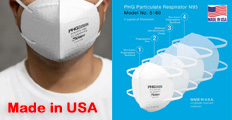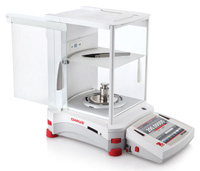



Find all of your laboratory and workplace safety supplies at Safety Emporium!
 Manufacturer |
 Glossary Index |
 Metastasis |
| MSDS Topics |
Free Sites | FAQ's | Regulations | Glossary | Software | Suppliers |
| Books | Forum | Poll | Fun stuff | Quiz | Store | |
| Understand your MSDS with the MS-Demystifier | Search ALL our MSDS info | |||||

Get forklift safety supplies like this training certification card from Safety Emporium.
The term mass is often used interchangeably with "weight". Strictly speaking, this is incorrect because weight varies with the force of gravity and mass does not.
For example, an astronaut would be almost weightless in outer space, but his or her mass would be unchanged from that on Earth. Therefore, one can say that mass is an expression of "how much stuff" something has.
Here is a handy conversion calculator for some common and uncommon mass (weight) terms. Each term is defined in the next section.
Many of the items you will find on an Safety Data Sheet come in both English (U.S. Customary System) and metric (International System or SI or cgs) units. The metric system has been adopted by almost every country except the United States. Even in the U.S., scientists and technical people use the metric system because of its ease of use.
| Unit | Equivalent measurements, comments |
|---|---|
| Metric ton (t) | A metric ton is equal to 1,000 |
| Kilogram (kg, kilos) | The prefix "kilo" means 1,000 |
| Gram (g, gm) | A gram is 1/1000th of a kilogram. A gram is equal to the mass of water contained in a cube one cm on each side (one cubic centimeter = 1 cc = 1 cm3 of water weighs 1 gram). |
| Carat (c) | Used primarily for gemstones, one carat = 0.2 gram = 0.00705 ounce. There are 5 carats in a gram. |
| Milligram (mg, mgs) | The prefix "milli" means 1/1000. Therefore, 1 milligram = 0.001 grams, or 1000 mg = 1 g. 1 mg = 1e-6 kg. 1 mg = 3.52e-5 ounces. |
| Microgram (μg, μgs) | The prefix "micro" means 1/1,000 |
| Nanogram (ng, ngs) | The prefix "nano" means 1/1,000 |
| Picogram (pg, pgs) | The prefix "pico" means 1/1,000 |
| Femtogram (fg, fgs) | The prefix "femto" means 1/1,000 |
| attogram (ag, ags) | The prefix "atto" means 1/1,000 |
| Zeptogram (zg, zgs) | The prefix "zepto" means 1/1,000 |
| Ton (long ton) | In the U.S., a long ton = 1.12 short tons = 2,240 pounds = 1.016 metric tons. |
| Ton (short ton) | In the U.S., a ton is 2,000 |
| Pound (lb, lbs) | A pound is an English unit of weight. There are 16 ounces or 7,000 |
| Ounce (oz, oz avdp) | An ounce is equal to 437.5 grains, 1/16 of a pound, or 28.350 grams. The system of having 16 ounces in a pound is called the avoirdupois system. Note:
|
| Dram (dr, dr avdp) | Fairly uncommon. There are 256 drams in a pound. 1 dram = 27.34 grains = 1/16 ounces. Caution: apothecary drams and fluid drams are different from the avoirdupois dram (see previous entry). |
| Grain (lb, lbs) | Fairly uncommon. There are 480 grains in a troy ounce and 7,000 |

Whether you need micrograms or pounds there's an Ohaus balance to meet your needs at Safety Emporium.
Be very careful to note the units when reading numbers on a Safety Data Sheet. If you ever perform a calculation of any sort, always remember to write the units next to each number in your calculation and make sure that they cancel properly.
See also: area units, distance units, energy units, mole, pressure units, temperature units, volume units.
Additional definitions from Google and OneLook.
Entry last updated: Tuesday, January 3, 2023. This page is copyright 2000-2025 by ILPI. Unauthorized duplication or posting on other web sites is expressly prohibited. Send suggestions, comments, and new entry desires (include the URL if applicable) to us by email.
Disclaimer: The information contained herein is believed to be true and accurate, however ILPI makes no guarantees concerning the veracity of any statement. Use of any information on this page is at the reader's own risk. ILPI strongly encourages the reader to consult the appropriate local, state and federal agencies concerning the matters discussed herein.